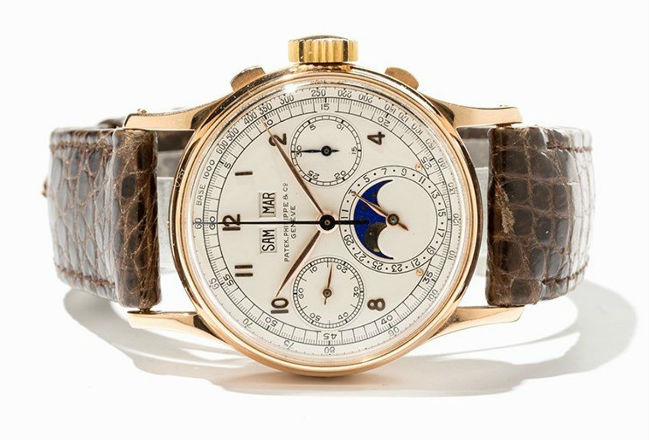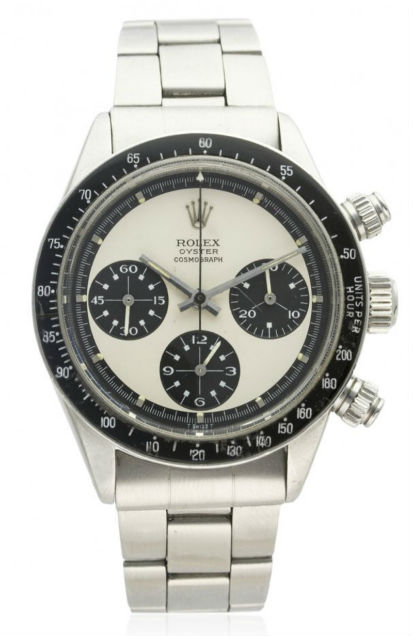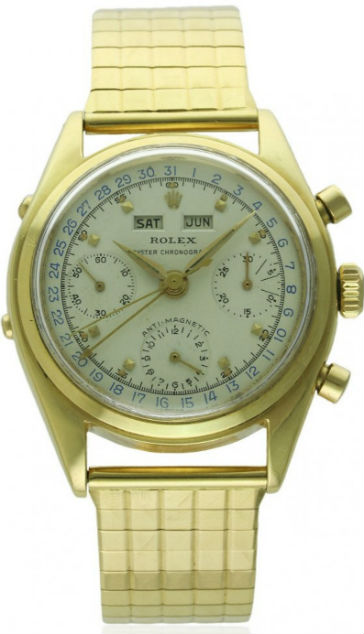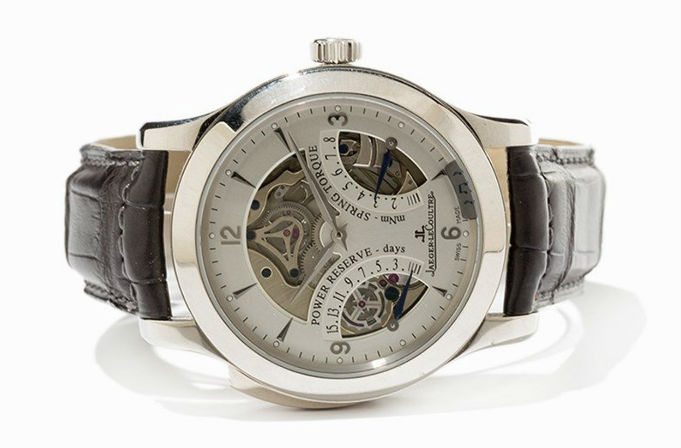
NEW YORK — In the modern era when smartphones tell time, why do some men still wear wristwatches? More than just a meticulously crafted instrument to tell time, a luxury watch is the perfect accessory for the fashionable. It’s functional jewelry. For women, a large diamond brooch is a statement piece; for men, it’s a vintage watch from the likes of Rolex or Patek Philippe.
Some people don’t even bother winding their watches to the correct time; after all, even stopped watches are correct at least twice a day.
“I don’t wear a tank watch to tell the time. In fact, I never even wind it,” Andy Warhol reportedly quipped in 1973 of his Cartier Tank Solo watch in yellow gold with a black alligator strap. He had quite a collection of luxury watches, which he wore because he loved their look. After his death, his collection was auctioned off at Sotheby’s in 1988 with his favorite tank watch bringing $4,950. It auctioned again at Leslie Hindman Auctioneers for $10,625 in 2013.
Watches, especially vintage mechanical watches, traditionally have commemorated milestones in a man’s life (graduation, new job, marriage, birth of a child, and retirement). These cherished watches were often passed from father to son. Patek Philippe once proclaimed in an advertising campaign, “You never actually own a Patek Philippe, you merely look after it for the next generation.” The campaign spoke to a large component in the appeal of luxury watches. Besides being handsome and well made, they are status symbols, signifying one has reached a certain level of success. Many become family heirlooms to be passed down from one generation to another.

Collectors have many reasons why they are drawn to watches. “Some people see watches as art, some are obsessed by the fine details of the mechanics, some are into pure aesthetics of the design or simply their original purpose/function be it a deep-sea diver’s tool watch or a military spec timepiece,” said Toby Sutton, cofounder and director of Watches of Knightsbridge Auctioneers, London.
A leader in the luxury watch market for men is Rolex. Founded in 1905, the Swiss watchmaker is still in business, making some 2,000 watches a day. It is best known for making the first waterproof wristwatch, the Oyster; and making a watch with a perpetual rotor self-winding mechanism. It’s little surprise then that vintage Rolex and Patek Philippe watches are routinely among LiveAuctioneers’ top auction prices for watches. In separate auctions in June 2015, a Patek Philippe Perpetual Calendar Chronograph, Ref. 1518R, circa 1948, earned $702,698 at Auctionata Paddle 8 AG auction and an 18K solid gold “Jean-Claude Killy” Rolex chronograph, named for the famous alpine skier who swept the 1968 Olympics, attained $211,785 at a Watches of Knightsbridge auction (below).

Omega watches have been manufactured in Switzerland since 1848. The company has been the official timekeeper of the Olympic Games since 1932. Omega watches have also been popular with NASA, with one of its watches making the first moon landing in 1969 on the wrist of Neil Armstrong. That watch is in the collection of the Smithsonian. A rare stainless steel Omega Speedmaster “Special Projects” chronograph watch dated 1963 brought $51,621 in September 2017 at Watches of Knightsbridge (below).

Another Swiss watchmaker specializing in high-end timepieces, Patek Philippe debuted in 1839 and is known for its technical mastery of horological complications (mechanisms enabling special features on a watch in addition to telling time). The company is renowned for having made some of the most complicated watches.
“The most successful brands of today are the ones with continuous existence from the early 20th century or before, i.e. Rolex, Patek Philippe and Omega. This is because they have been able to continuously research and develop better and more quality watches through the decades,” said Sutton.
By the late 1970s and continuing into the early 1980s, quartz watches made in Japan gained a foothold in the industry and production surpassed that of the Swiss-made watches, putting a dent into the mechanical watch market and making it a challenge to bounce back. Vintage watches though continue to appreciate in value.

Collectors looking to buy an investment-quality watch should pay heed to the originality of the main components—the movement, case, dial and hands. “Determining the originality of the dial and hands are where experts play a key role and with knowledge from experience and constant research,” Sutton said. “Some of the brands such as Patek and Omega offer an extract of the archives, which will tell you whether the movement number and case reference are correct and the year and country the watch was originally delivered. This is important and useful information for collectors and us as auctioneers.”


